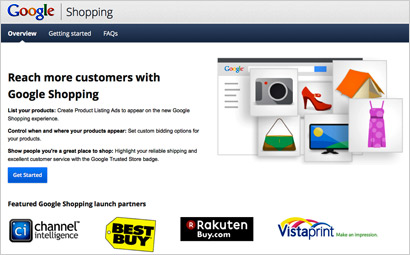Commentary
Google's PLA Web Sweeper
- by Laurie Sullivan , Staff Writer @lauriesullivan, September 4, 2012

Google announced at the end of May that it would transition Google Product Search into Google Shopping, dropping the free service that requires merchants to pay for product listing ads (PLAs). Similar to a distributor, Google's online service connects people to brands and products. And while some merchants struggle with the transition from a free to a paid model, it has become clear that the change remains one more step by Google to clean up the garbage online and restructure the Web.
Didit cofounder Kevin Lee said the company acquired Inceptor for the company's expertise in feed management, optimization and PLA. Digital marketing company Kenshoo on Tuesday released a PLA function as part of its enterprise and local platforms that provides tracking and reporting for the platform and custom PLA bids.
In a Google+ Hangout, where Jon Venverloh, senior manager of Google Shopping, details how to create listings, it almost sounds like a way to change the perception and force merchants to keep updating accurate product descriptions. These merchants once viewed the site as a free way to get traffic and neglected the data.
Forcing merchants to pay for data that appears on the Web helps to clean up product descriptions -- something I know all too well. While working at the technology distributor Ingram Micro in the early 1990s, I supported the company by creating 500-page product catalogs. The files generated through product feeds from companies like Microsoft and Oracle required buyers to manually go into the database and change the product descriptions. Anything that appeared in the product description line in the database was printed in the catalog.
So when Google's Venverloh describes how merchants provided inaccurate data or when Kenshoo and other companies describe a PLA tool that allows search marketers to manage tracking within data feeds and the ability to better predict PLA revenue per click based on set bids, I know exactly what that means.
Venverloh also said traffic on the free site was hard to predict because ranking was based on Google's search algorithm in which merchants had no influence on the site. The site also gave merchants too few opportunities to differentiate their services. And the product listings were ranked by a relevance measurement and a bid signal, whereas Products Universal in search query results was ranked solely by relevance. With Google Shopping the engine combines both.




It will be fascinating to see the manifestation of the hybrid PI - auction for Q4. Google will quickly understand which listings have high quality score as a result of the merchant itself as well as the product pricing effect.
Certainly retailers should have a strategy in place to understand how best to allocate a budget across the regular AdWords and the Google Shopping PLA ads. Yes, Inceptor's expertise when added to our own and our joint technologies will be a killer solution for our clients. ;-)